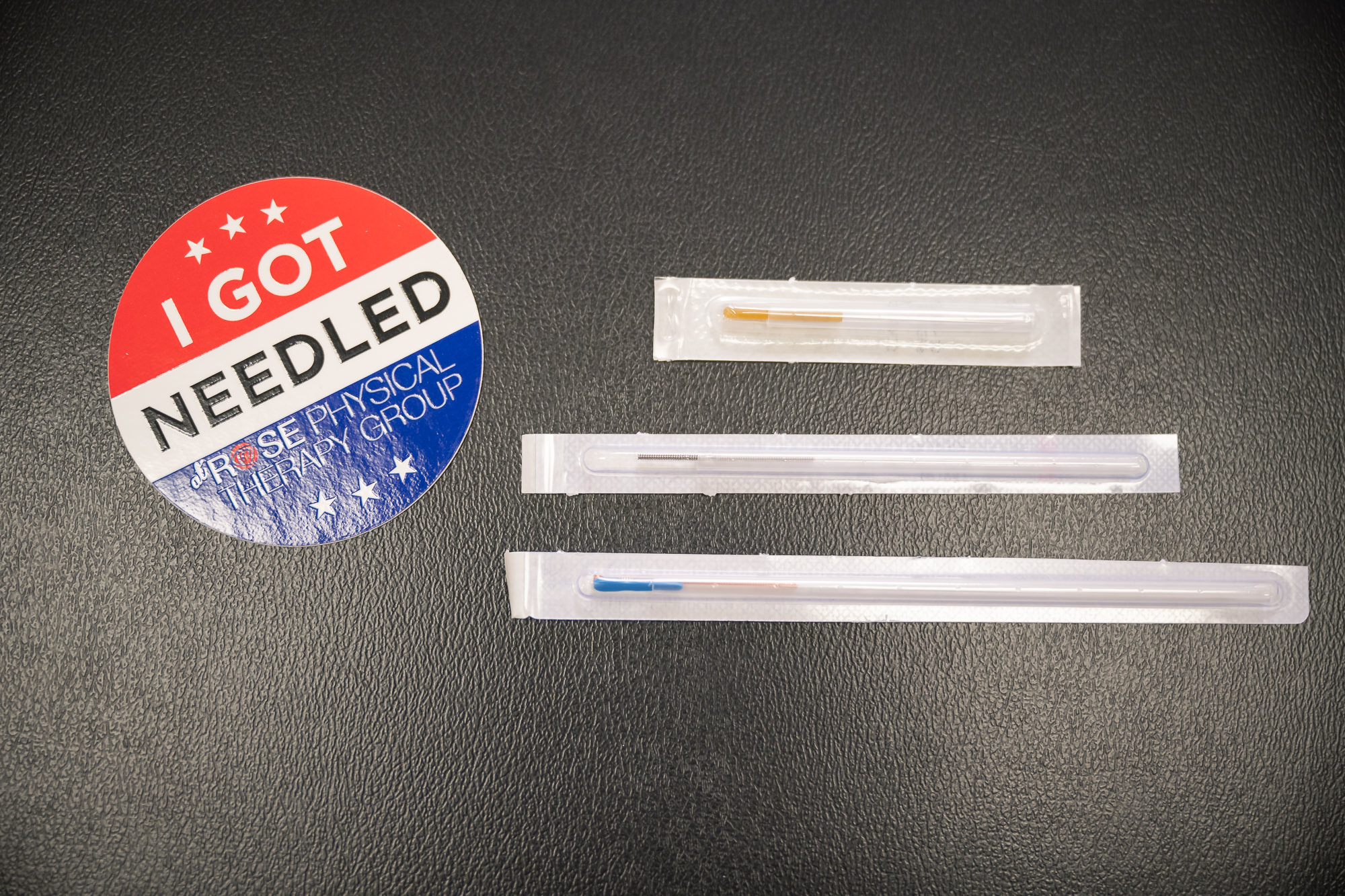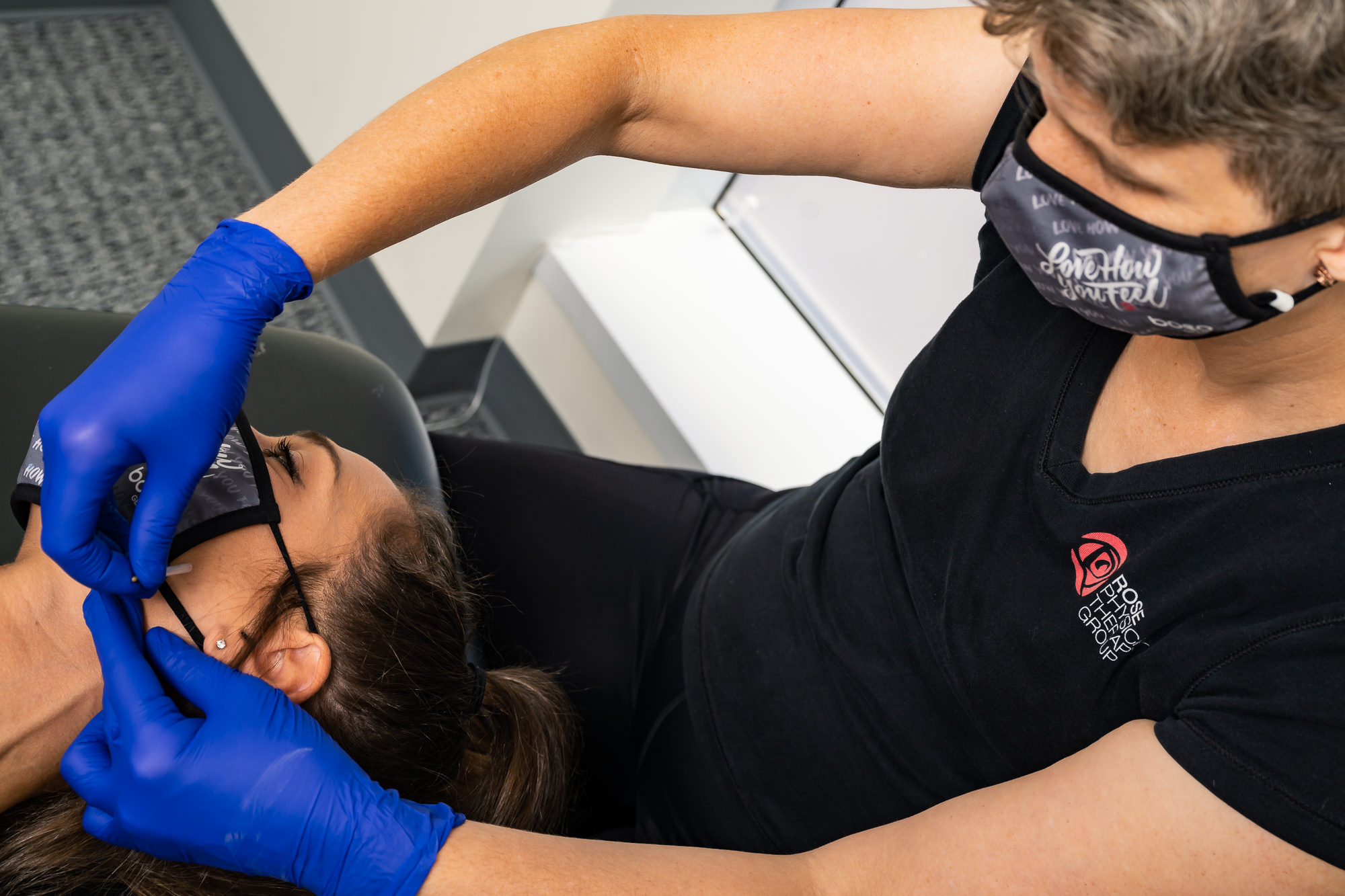The benefits of trigger point dry needling include relieving muscle pain and tightness, improving range of motion, speeding up recovery, and correcting nerve function.
When to use trigger point dry needling?
For problem areas that don’t seem to go away, there is an intervention whose objective is to eliminate trigger points throughout your body. That intervention is dry Needling. When a physical therapist performs trigger point dry needling, they insert a very thin acupuncture needle directly into the muscle with the trigger point, and pulse the needle in and out in different directions. If the needle hits a trigger point, your muscle will elicit a twitch response; an involuntary contraction of the muscle, which helps to flush out the chemicals that cause a trigger point. The therapist will do this until all the trigger points have been eliminated from that area, and then the needle will be removed.
Your physical therapist may consider dry needling as part of your Rose Physical Therapy Group treatment plan for symptoms such as deep, aching pain in a muscle, persistent muscle pain that does not respond to massage or manual therapy, a tender knot in a muscle, or difficulty sleeping due to pain.
 What Kind of Needles are Used?
What Kind of Needles are Used?
Nothing is injected during dry needling and the needles do not have a channel to facilitate injection.
Dry needling involves a thin filiform needle that penetrates the skin and stimulates underlying myofascial trigger points and muscular and connective tissues. The needle allows a physical therapist to target tissues that are not manually palpable.
The most effective dry needling performed at Rose Physical Therapy uses a technique of manipulating a needle in the trigger point in a “pecking” motion that creates tiny lesions which promote healing.
Your physical therapist will be outfitted with proper personal protective equipment (PPE), including using sterile needles and nitrile or latex gloves.

How does it feel?
The sensation you feel when a twitch response occurs would best be described as abrupt. It can be startling, uncomfortable, and sometimes painful, but it is an incredibly precise and effective way to relieve a trigger point. If done properly, the trigger point in your muscle will have disappeared completely or be reduced drastically. The result of which is commonly a reduction of pain and an increase in range of motion. Following the treatment, the therapist may provide some stretches, manual therapy, or exercises to improve the strength in the client’s new range.
Benefits of Dry Needling
Dry needling has the benefits of relieving muscle pain and tightness, improving range of motion, speeding up recovery, and correcting nerve function
- Relieving Muscle Pain and Tightness: when a needle is inserted into a painful trigger point, the nerves are reset and the muscle fibers can relax.
- Improving range of motion: when the trigger point releases, you regain flexibility in the muscles that allow you to have more range of motion.
- Speeding up recovery: by resetting trigger points at the neurological level, dry needling gets to the heart of the problem. Dry needling is faster and more effective than massage or manual therapy in which the muscles are pressed, often injuring healthy tissue around the trigger point in the process. Dry needling also causes a tiny lesion, but this lesion is extremely small and serves to promote healing.
- correcting nerve function : induces both a vascular (blood flow) and neurogenic (nerve) response that desensitizes the inflamed nerves and regenerates tissue, thereby alleviating pain in the soft tissue and restoring mobility.
Dry Needling is not Acupuncture
This technique is different from traditional acupuncture. While they both use the same needles, dry needling goes straight into the trigger point of the muscle. Acupuncture has been known to use the meridian system or acupuncture points to determine where they place their needles. In addition, dry needling typically uses a pecking motion of the needles, whereas in acupuncture the needles are left in place for a period of time.

What can be dry needled?
Any muscle can benefit from trigger point dry needling by your physical therapist, from that knot in your back or neck or calf, to muscles in your jaw to treat TMD/TMJ. Generally, trigger point dry needling helps with low back pain/tension, neck pain, tennis elbow, migraines, spinal dysfunction, joint dysfunction, sciatica, and many more muscles and areas that require pain relief.
Rose Physical Therapy is here in Washington, DC to help!
If dry needling is something that you are interested in as a treatment to help reduce pain and improve range of motion, please give Rose Physical Therapy Group a call. All of our therapists have taken dry needling certification courses, and use dry needling in our everyday practice. We have an office in downtown Washington, DC near Dupont Circle and Farragut Square, and a second office in the Navy Yard Capitol Riverfront district just a few blocks from Capitol Hill. You can call or schedule an appointment through our website. We're looking forward to showing you what tigger point dry needling can do to help you get back to action, and of course our many other specialtist, best in the Washington, DC area!


